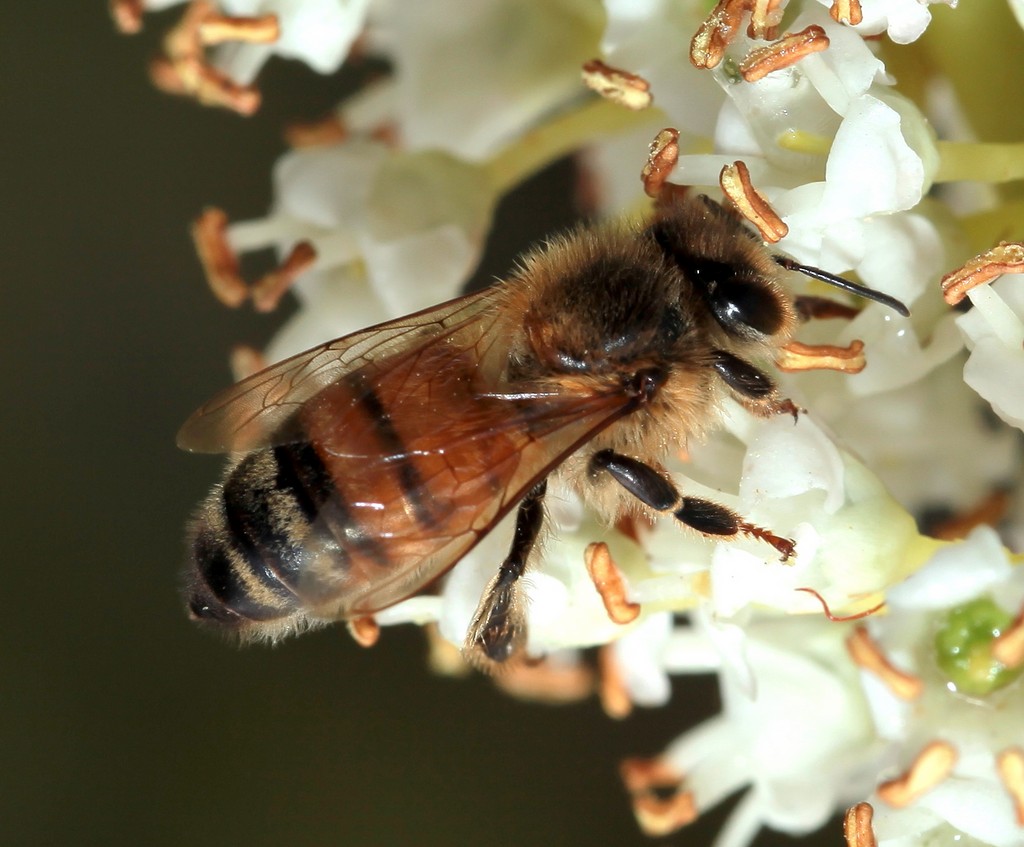APIS MELLIFERA LIGUSTICA - (SPINOLA, 1806)
Apis mellifera ligustica dite abeille italienne ou abeille jaune est une sous-espèce d'abeille élevée pour son miel. Apparue au sud des Alpes italiennes, elle est la plus répandue des abeilles grâce à, notamment, son adaptabilité aux différents climats, bien qu'elle s'avère moins productive dans les zones tropicales humides et les zones de grand froid.
Abeille est un nom vernaculaire ambigu désignant en français certains insectes hyménoptères de la superfamille des Apoidea. Au moins 20 000 espèces d'abeilles sont répertoriées sur la planète dont environ 2 500 en Europe et 1 000 en France. En Europe, l'espèce la plus connue est Apis mellifera qui, comme la plupart des abeilles à miel, appartient au genre Apis. Cependant, la majorité des abeilles ne produisent pas de miel. Les abeilles peuvent être classées selon leur mode de vie : les abeilles domestiques, sauvages, solitaires ou bien sociales… Les abeilles sont nettement distinctes des guêpes, par leur morphologie et leur comportement. Les bourdons en revanche sont un groupe particulier d'abeilles
-------------------------------
Apis mellifera ligustica is the Italian bee which is a subspecies of the western honey bee (Apis mellifera).
Bees are flying insects closely related to wasps and ants, and are known for their role in pollination and for producing honey and beeswax. Bees are a monophyletic lineage within the superfamily Apoidea, presently classified by the unranked taxon name Anthophila. There are nearly 20,000 known species of bees in seven to nine recognized families, though many are undescribed and the actual number is probably higher. They are found on every continent except Antarctica, in every habitat on the planet that contains insect-pollinated flowering plants. Bees are adapted for feeding on nectar and pollen, the former primarily as an energy source and the latter primarily for protein and other nutrients. Most pollen is used as food for larvae. Bees have a long proboscis (a complex "tongue") that enables them to obtain the nectar from flowers. They have antennae almost universally made up of 13 segments in males and 12 in females, as is typical for the superfamily. Bees all have two pairs of wings, the hind pair being the smaller of the two; in a very few species, one sex or caste has relatively short wings that make flight difficult or impossible, but none are wingless. The smallest bee is Trigona minima, a stingless bee whose workers are about 2.1 mm (5/64") long. The largest bee in the world is Megachile pluto, a leafcutter bee whose females can attain a length of 39 mm (1.5"). Members of the family Halictidae, or sweat bees, are the most common type of bee in the Northern Hemisphere, though they are small and often mistaken for wasps or flies. The best-known bee species is the European honey bee, which, as its name suggests, produces honey, as do a few other types of bee. Human management of this species is known as beekeeping or apiculture. Bees are the favorite meal of Merops apiaster, the bee-eater bird. Other common predators are kingbirds, mockingbirds, beewolves, and dragonflies.
